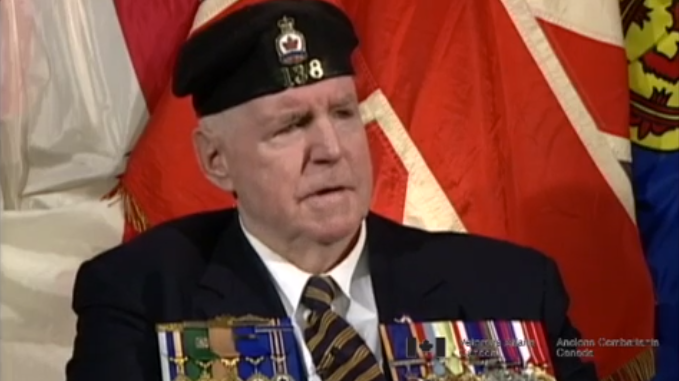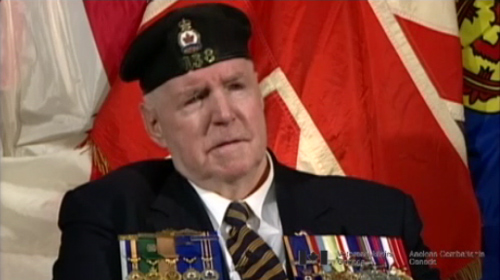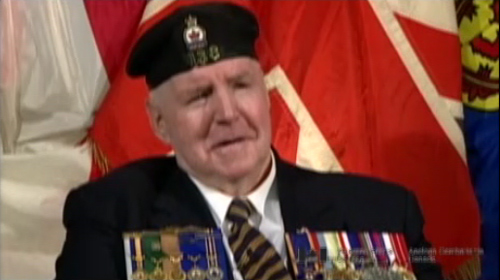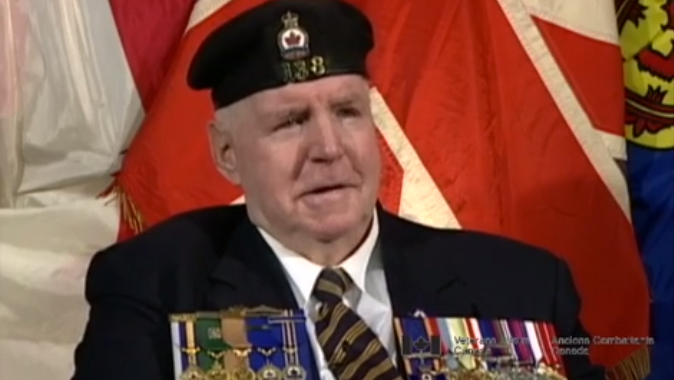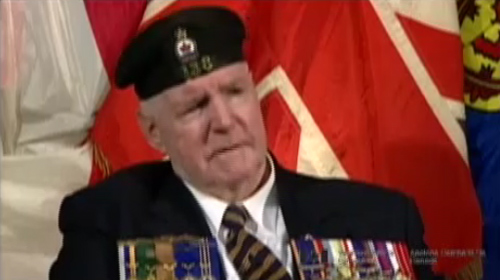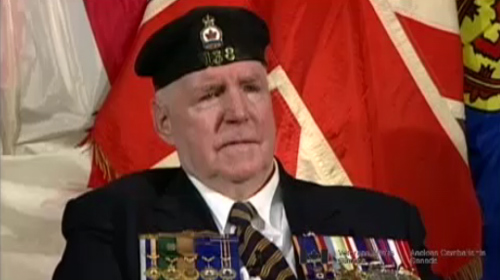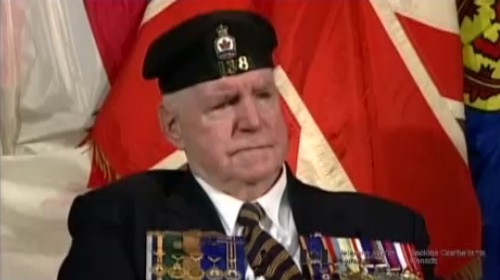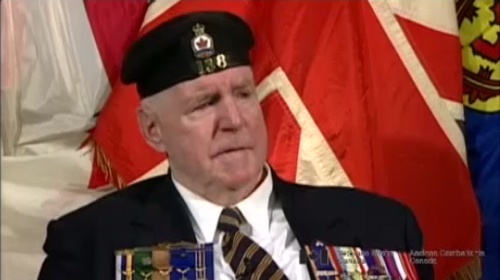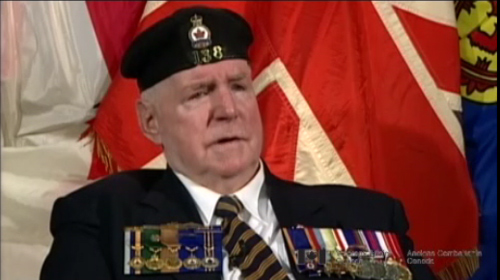You got to go to what they call action stations. And your job
might be in the forward gun or the fore-aft gun. Mine was up on
the bridge with an (inaudible) gun, a machine gun. Me and my
gunner was there. And we watched and we could see the people,
the ships coming in, and we were there. We couldn’t get out
because there was no place . . . they couldn’t let us out. There
was no place for us to go. So, they told us to keep going, keep
going. So, we swept around the mines there, but all night you
could hear the drones of the aircraft. We didn’t know whether
they were friend or foes, or what they were. But once, one time,
I looked. There was a big search light, and I looked up and I
seen them gliders. They were the airborne troops that were
heading, heading for the beaches. And we watched that all night
there, and then at 7 . . . about 5:30 in the morning, the word
was, “Go.” So, we went in, took ourselves out of bed again. All
the landing crafts and all the small ships . . . them landing
craft would come and they’d have about 200 men aboard them, in
the landing crafts ready to hit the beach. We come in, we turned
around, we come back out, and the assault craft and the landing
craft went in there. As soon as that ramp come down from the
thing there, them poor devils went ashore, there. They were
brave men. If there is any such a thing as a hero on D-Day, it
was the first assault troops that went ashore because they
landed there. They were in no man’s land. They had nowhere to
go. The Germans had a big barricade up there. They had a
bulkhead, and they had a machine gun nest. They had a bunker.
And just as soon as they come off the beach, they could pick
them off, slaughter them. Our beach . . . the Canadian troops,
when they talk about Juno beach . . . we were in the 31st
Minesweeping Flotilla, what they call the 31st Minesweeping
Flotilla, and we got assigned with the American flotilla, and
they went on the Omaha beachhead, “bloody Omaha” is what they
called it. It was a slaughter there. The assault craft would be
about, I’d, I’d say about 30, 40 feet long. It was alright for
the first ships that went in there. They went in, they got in,
they got ashore, but as the ships come in later, you know, they
had to stand back about another 10, 15 feet. And then they
opened the door. And like I said, it was rough and soon as that
ramp come open on the front door, there was two or three hundred
soldiers wanting to go ashore, and the wave just swept into the
thing and swept them out to sea. An awful lot of them drowned.
They never got to shore. They never got to shore. And like I
said, if they got to shore, the German machine guns were there
just to gun them down. The poor devils had a hard time. Oh, yes.
We could see, we could see they had a front sight, a front row
seat. And what I meant to tell you, up on the bridge and looking
down on the channel, I thought I’d gone crazy. I thought I went
foolish. And I said to my buddies, “Look, do you see what I
see?” He said, “What?” “All the trucks.” I said, “Look at all
the trucks.” “Where?” “On that . . . look!” He looked. “By God,
yeah,” he said. The trucks were, one little fella driving, and
driving it like a truck. And I’d never seen an amphibious jeep
in my life. The one they got ashore, the, the craft was made
that it could go in water or it could go ashore. And that’s how
they established a little fortification on the beachhead to give
the troops some cover to come in. But I never seen that before,
never in God’s world, I thought for sure. And daylight in the
morning at 5:30, I looked up in the sky and all you could see
was zebra-striped aircraft. They were all flying overhead, all
flying over. And that zebra stripe was for aircraft recognition.
And they, they went in, and you could hear, you could hear the
bombs. And I guess they were bombs,
but it was just aboard the ship, there. It was quite a sight.



